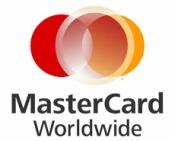MasterCard Worldwide
We’re Updating Our Profiles Section
Stay tuned for all new and updated exclusive profiles on companies and organizations involved in the ecosystem.

MasterCard spearheaded the move to contactless-card payment in the U.S. with its PayPass technology.
The payment brand was instrumental in getting some large U.S. chains to accept contactless payment—in large part by subsidizing their terminals. Among the merchants to take contactless payment are McDonald’s restaurants and 7-Eleven convenience stores. MasterCard also encouraged the first big issuer, JPMorgan Chase, to roll out the bank’s blink contactless card in 2005, though Chase also began issuing Visa contactless cards.
Even before that, MasterCard was experimenting with contactless-mobile payment, launching probably the first trial in the U.S. in 2003, in Irving, Texas, which was little more than PayPass cards glued to the back of some Nokia phones.
Always more flexible with its contactless application than its more conservative rival Visa, MasterCard allowed Turkey’s Garanti Bank to begin deploying contactless cards in July 2006 and process the transactions using magnetic-stripe data, instead of the more secure, and more expensive, EMV standard--despite the fact Turkey was rolling out EMV at the time. It helped lead to the first contactless rollout in continental Europe.
MasterCard, however, watched as Visa Europe led the higher-profile launch of contactless payment in the UK, in September 2007, with big issuer Barclaycard in London. But Barclaycard, in the spring of 2009, said it would be working with PayPass, not Visa payWave, as it develops mobile-payment and other NFC services with mobile operator Orange UK.
And MasterCard has been capturing co-branded card programs on the Continent, outbidding Visa, and is adding PayPass to the mix. Issuers, such as the banking arms of big retail chains Carrefour Group and Auchan Group in France, and banks connected with Lufthansa’s Miles & More frequent flyer credit card in Germany, include a contactless interface on their cards. In the case of Carrefour and Auchan, they also deploy terminals to accept contactless payment. Moreover, MasterCard is lowering interchange in Italy to boost PayPass. The card scheme also has opened a significant contactless presence in Poland.
In Asia, despite PayPass activity in Taiwan, South Korea and Malaysia, MasterCard plays second fiddle to Visa for contactless payment, in large part due to MasterCard’s smaller market share. The “rollout” of NFC services in Malaysia with Maybank and Maxis Communications is a Visa program.
But MasterCard participated in one of the largest NFC payment trials to date in Asia, a now 3,000-phone trial in Bangalore, India, with Citibank. MasterCard also joined with Citi for a pivotal trial in the U.S., which launched in New York City in December 2006. The trial enabled about 300 users to tap their Nokia NFC phones to pay wherever PayPass was accepted at the time in the U.S., including a line of the New York City subway.
MasterCard has been first off the mark in clearing a path for direct payment of transit fares by contactless bank cards. Commuters also could one day tap their credit, debit or prepaid bank accounts to cover fares with the same applications on NFC phones.
In 2008, MasterCard introduced an “Over-the-Air Provisioning Service” designed to make it easier for issuers to personalize PayPass applications to customer phones over-the-air, including offering a standardized way for trusted service managers to access the PayPass files. TSMs, however, can get by without it. The service was to get perhaps its first use in Europe in a trial planned by Norwegian bank DnB NOR and telco Telenor early in 2010.
The OTA service is part of the MasterCard Mobile Program, which MasterCard has been promoting--although MasterCard has trailed Visa in spelling out a coherent mobile strategy.
Still, MasterCard early on showed a greater willingness to cater to issuers, which want their brands more prominently featured on handset screens in planned mobile-wallet applications.
And in addition to allowing mag-stripe contactless card rollouts in such EMV countries as Turkey and Canada, MasterCard was also the first international card scheme to accept detailed rules adopted by French mobile operators and banks for planned commercial launches of NFC mobile payment service—even though the rules could differ from the way MasterCard issuers conduct mobile transactions elsewhere, once NFC gets started.
Yet, despite its years of promoting PayPass, MasterCard still has not released transaction figures for contactless payment in the U.S. or elsewhere and does not break out figures for PayPass cards and merchant locations by country or region.
| MasterCard Worldwide Cards | POS Volume 2009* | POS Volume 2008* | Cards 2009** |
| Asia-Pacific, ME, Africa | 326 | 287 | 268 |
| Canada | 82 | 88 | 47 |
| Europe | 543 | 573 | 200 |
| Latin America | 98 | 96 | 123 |
| U.S. | 804 | 856 | 328 |
| Worldwide | 1,852 | 1,900 | 966 |
| *In billions of US$ **In millions, credit, debit and charge Source: MasterCard Worldwide for years ending in December |
|||
| PayPass Worldwide | Q4 2009 | Q3 2009 | Q2 2009 | Q1 2009 | Q4 2008 |
| Cards | 70 | 66 | 61 | 55 | 50 |
| Terminals | .200 | .174 | .153 | .146 | .141 |
| In millions Source: MasterCard Worldwide |
|||||












